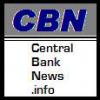Romania hikes rate for first time since Aug. 2008

Romania’s central bank raised its monetary policy rate by 25 basis points to 2.0 percent, a move that was largely expected, citing rising inflation in coming months from faster-than-expected economic growth, tax cuts and lower administered prices.
It is the National Bank of Romania’s (NBR) first change in its policy rate since May 2015 and the first rate hike since August 2008 when it was raised to 14.25 percent. In February 2009 the NBR then embarked on an easing cycle in light of the global financial crises that ended in May 2015.
The rate hike – the first by any central bank worldwide in 2018 – comes after the BNR’s board started tightening its policy stance at its two previous meetings in October and November 2017 and then raised its inflation forecast on the back of higher fuel and energy prices.
Today the central bank raised its deposit rate by a further 25 basis points to 1.0 percent and has now raised it by 75 basis points since October. The Lombard lending rate was also raised by 25 basis points to 3.0 percent but it now back to the level in October.
In November the NBR raised its outlook for inflation to rise to 2.7 percent by the end of 2017 from a previous 1.9 percent, and said inflation may spike to 3.9 percent at the beginning of this year before slowly falling to 3.2 percent by the end of 2018.
The NBR targets inflation of 2.5 percent, plus/minus 1 percentage point.
The central bank’s governor, Mugur Isarescu, has been open in his concern that the government’s fiscal policy may not only boost the budget deficit but also inflation and thus complicate the central bank’s task at a time of improving global growth, volatile oil prices and continued ultra-easy monetary policy by major central banks.
“The uncertainties and risks surrounding the inflation outlook stem mainly from the fiscal and income policy stance, the volatility of international oil prices, and from the pace of euro area and global economic growth, also amid a slow normalization of the monetary policy pursued by the major central banks,” the NBR said.
Romania’s inflation rate accelerated to 3.2 percent in November from 2.6 percent in October, still below the bank’s upper limit but above forecasts. The BNR said higher prices were seen “almost across the board,” due to higher administered electricity prices, global oil prices and higher fuel price from an increase in duties on motor fuel.
Economic growth in Romania also topped expectations in the third quarter of last year as household consumption continued to improve along with the first rise in capital formation in six quarters as the uptrend in industrial output strengthens.
Gross Domestic Product surged by an annual rate of 8.8 percent in the third quarter, up from 6.1 percent in the second quarter, helped by agriculture which posted its highest growth rate in four years.
Imports continued to rise faster than exports so Romania’s trade balance showed a deficit of 9.4 billion euros in the first 10 months of the year, higher than in the entire 2016 year.
Romania’s leu has been steadily depreciating against the euro since 2009 and was trading at 4.63 to the euro today, down 1.9 percent since the start of 2017.
The National Bank of Romania issued the following statement:
- to increase the monetary policy rate to 2.00 percent per annum from 1.75 percent per annum as of 9 January 2018;
- to raise the deposit facility rate to 1.00 percent per annum from 0.75 percent per annum and the lending facility rate to 3.00 percent per annum from 2.75 percent per annum as of 9 January 2018;
- to maintain the existing levels of minimum reserve requirement ratios on both leu- and foreign currency-denominated liabilities of credit institutions.
Source: http://www.centralbanknews.info/2018/01/romania-hikes-rate-for-first-time-since.html
Anyone can join.
Anyone can contribute.
Anyone can become informed about their world.
"United We Stand" Click Here To Create Your Personal Citizen Journalist Account Today, Be Sure To Invite Your Friends.
Please Help Support BeforeitsNews by trying our Natural Health Products below!
Order by Phone at 888-809-8385 or online at https://mitocopper.com M - F 9am to 5pm EST
Order by Phone at 866-388-7003 or online at https://www.herbanomic.com M - F 9am to 5pm EST
Order by Phone at 866-388-7003 or online at https://www.herbanomics.com M - F 9am to 5pm EST
Humic & Fulvic Trace Minerals Complex - Nature's most important supplement! Vivid Dreams again!
HNEX HydroNano EXtracellular Water - Improve immune system health and reduce inflammation.
Ultimate Clinical Potency Curcumin - Natural pain relief, reduce inflammation and so much more.
MitoCopper - Bioavailable Copper destroys pathogens and gives you more energy. (See Blood Video)
Oxy Powder - Natural Colon Cleanser! Cleans out toxic buildup with oxygen!
Nascent Iodine - Promotes detoxification, mental focus and thyroid health.
Smart Meter Cover - Reduces Smart Meter radiation by 96%! (See Video).





